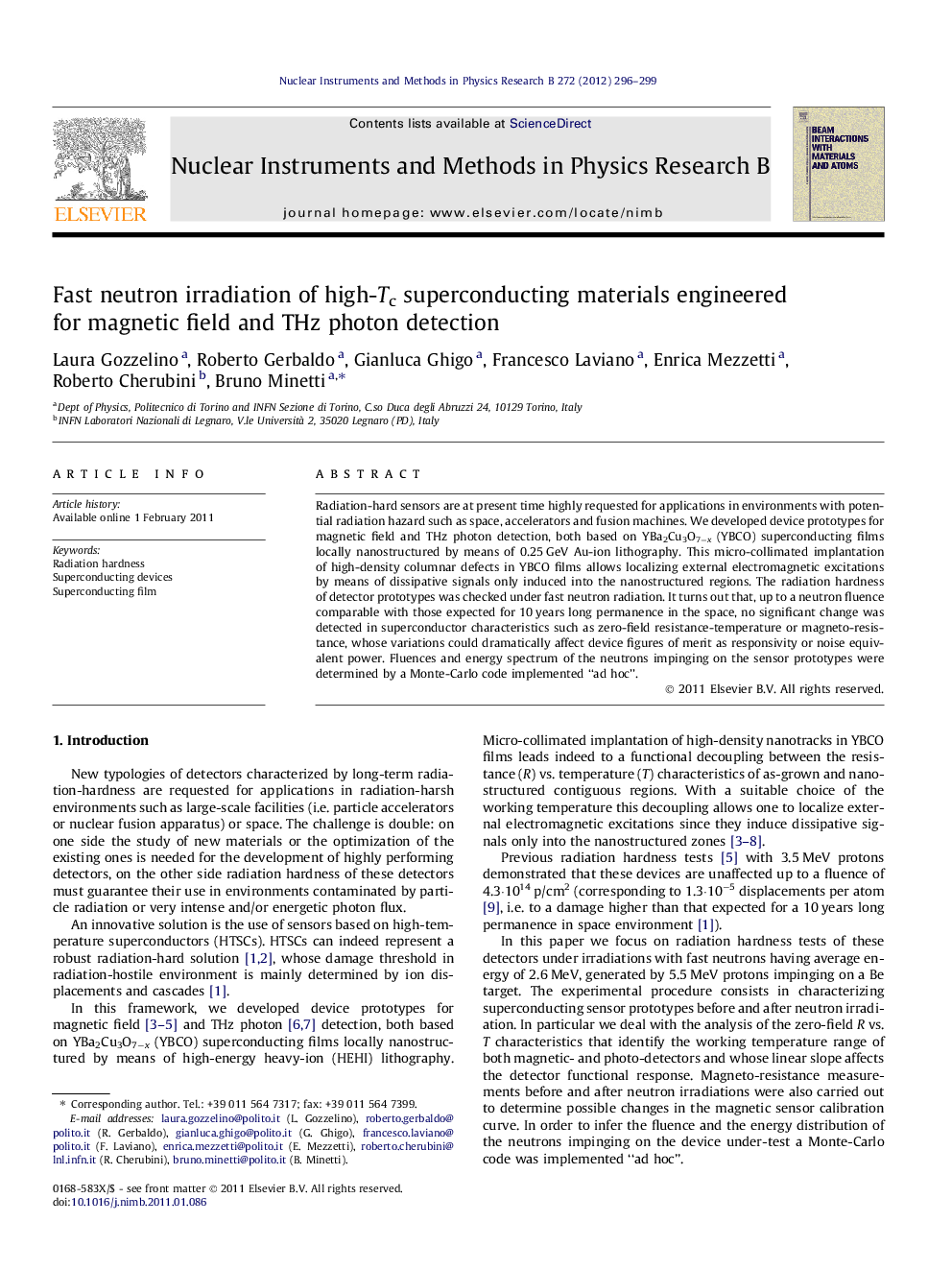| Article ID | Journal | Published Year | Pages | File Type |
|---|---|---|---|---|
| 1680956 | Nuclear Instruments and Methods in Physics Research Section B: Beam Interactions with Materials and Atoms | 2012 | 4 Pages |
Radiation-hard sensors are at present time highly requested for applications in environments with potential radiation hazard such as space, accelerators and fusion machines. We developed device prototypes for magnetic field and THz photon detection, both based on YBa2Cu3O7−x (YBCO) superconducting films locally nanostructured by means of 0.25 GeV Au-ion lithography. This micro-collimated implantation of high-density columnar defects in YBCO films allows localizing external electromagnetic excitations by means of dissipative signals only induced into the nanostructured regions. The radiation hardness of detector prototypes was checked under fast neutron radiation. It turns out that, up to a neutron fluence comparable with those expected for 10 years long permanence in the space, no significant change was detected in superconductor characteristics such as zero-field resistance-temperature or magneto-resistance, whose variations could dramatically affect device figures of merit as responsivity or noise equivalent power. Fluences and energy spectrum of the neutrons impinging on the sensor prototypes were determined by a Monte-Carlo code implemented “ad hoc”.
